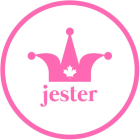You may be familiar with market or audience segmentation, but have you considered applying similar principles to your content?
If your organization offers multiple products or services, then content segmentation may be a strategy your customers thank you for. To demonstrate, have you noticed how easy it is to find the sports or financial section of the newspaper? That’s a prime example of content segmentation, and in this case, readers are spared from an overload of unwanted information.
You can use content segmentation in the same way. Helping your customers find what they want and adding impact to your online content. The Content Marketing Institute describes content segmentation as “the immediate ability for your visitor to choose the content that applies to them.” And what better way to hold customers’ attention than by simplifying their experience.
Let’s look at what we mean by content segmentation and how you can implement it!
Content versus Segments
Firstly, content refers to text, graphics, illustrations and videos that your target audience identifies with your brand. In comparison, segmentation is curating that content with specific goals in mind.
According to the Content Marketing Institute, “segments are small sections of content that are uniquely and clearly packaged then repeated throughout a single project or across multiple works.” Segments can also be sub-categories of more extensive content grouped under one access point like a web page.
Dividing your blog by topic with tags is an example of content segmentation. Social media is another example — where your audience relies on finding unique content compared to your website. You can take advantage of built-in features on each platform or channel.
How to Begin

Start small and refine as you progress. The goal is to facilitate your customers’ ability to locate the information they value. So, using simple segmentation of the most likely categories searched by your customers is a valuable starting place. Once you have established initial segmentation, you can review the effectiveness and adjust your strategy at set intervals.
Also, consider design elements like colour, fonts, graphics and layout to help user navigation and funnel customers toward the content they need. For more on effective design, check out our previous post, The Importance of a Good Looking Website.
There is a sweet spot when it comes to content segmentation. Too little still works but overdoing it can be confusing. It’s vital you know when you’ve reached the perfect balance. Remember, you are narrowing down the choices so your customers can more easily find what they want. Group similar offerings together under a sub-section
Review Your Data
Data analysis shows who is using your site and for what purposes. This can help you strategize a content segmentation plan to showcase your offerings to smaller portions of your target audience for greater impact and a more personalized experience.
When your brand offers a personalized user experience, you create a connection with customers and build brand loyalty which is a central goal of marketing. So, tracking your data is crucial.
Final Thoughts
For effective content segmentation, you need a thorough understanding of your target audience, their motivations and barriers. With these details, you can effectively align your content, so it personalizes their experience and saves them time and frustration while building trust in your brand.
In essence, content segmentation improves user experience. Customers navigate your website easily and find what they are most interested in quickly, just like flipping through the newspaper to the business section.
Lastly, content segmentation is an invaluable tool you might benefit from. Try adding it to your marketing strategy!
